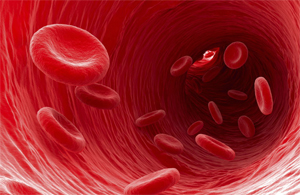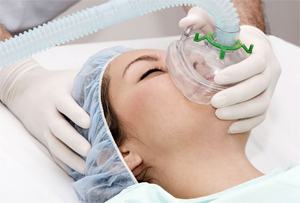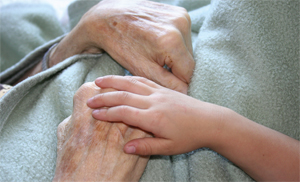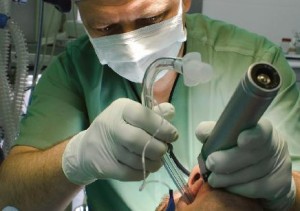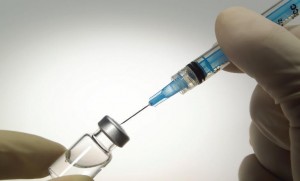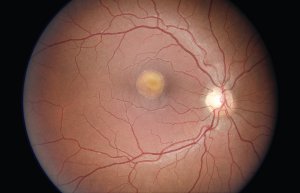Early last year, a David and Goliath battleraged between the most unlikely of foes. The gripes of a single blog post inspired a group of disaffected mathematicians and scientists to join forces and boycott the world’s largest publisher of scientific journals, Elsevier. Their movement, dubbed “Academic Spring”, was in response to the company’s political backing of the Research Works Act, a proposed bill in the United States (US) aimed at denying public access to scientific research funded by the US National Institute of Health (NIH). Drafted solely to benefit the interests of publishing companies, Elsevier reneged on its support for the bill following months of escalating protests and scathing publicity. Though the bill never saw the light of day, the struggle that unfolded was symptomatic of a more deep-seated and pervasive conflict between academics and publishers; a conflict that has been thrown into sharp relief by the rise of online publishing.
Since the publication of the first scholarly journal in 1665, journals have played an integral role in the scientific process. [1] As vanguards of modern day science, journals have been an enduring and authoritative source of the latest scientific research and developments. Academics form a key ingredient in the turnover and success of journals. Not only are they responsible for generating content, but they also volunteer as peer-reviewers for submissions relevant to their field of expertise and as mediators of the editorial process; a peculiar arrangement that plays into the hands of publishers. Before the arrival of the internet, journals facilitated the quick and widespread exchange of information throughout the scientific world. Publishers performed services including proofing, formatting, copyediting, printing, and worldwide distribution. [1] The digital age, however, rendered many of these tasks redundant and allowed publishers to dramatically reduce their costs. [1] Publishers also used the opportunity to offload further responsibilities onto the shoulders of academics, such as formatting and most copyediting, in order to significantly increase profits despite playing a limited role in the journal’s overall production.
The changing landscape of scientific publishing has seen commercial publishing firms acquire a lion’s share of the market from not-for-profit scientific societies in the last few decades. [2] The resulting monopolistic stranglehold has led to exorbitant subscription fees for access to their treasury of knowledge. Profit margins have hovered between 30-40 percent for over a decade, due in part to subscription prices outpacing inflation by seven percent per annum. [3] Moreover, publishers have exploited the practice of offering journals subscriptions in bundles, rather than on an individual needs basis, a crucial ploy underlying their profits. [4] Long-standing price increases, accompanied by dwindling library budgets, have gravely hampered the ability of libraries, universities, and investigators to acquire the most up-todate publications necessary for research and education. [4] The total expenditure on serials by Australian university libraries in 2010 was a staggering AU$180 million. [5] Even the most affluent libraries, such as Harvard, are declaring the situation as untenable and are resorting to subscriptions cuts. [3]
Along with cost, the principle of access for clinicians, scientists, and the general public alike underscores the ensuing debate. There is little argument that the accessibility of scientific findings is critical to the advancement of scientific progress. Consequently, the great paywalls of publishing houses have fostered an environment that stagnates the translation of science to the bedside and stifles medical innovation. Peer-reviewed literature is often funded by taxpayer-supported government grants. In Australia and New Zealand, over 80% of research and development is funded by the public purse. [6] In effect, governments have been held ransom by firms privatizing the profits accruing to publicly-financed knowledge. The barriers of access and cost also extend to developing nations. Without access to reliable medical literature, efforts to develop sustainable health care systems in these regions are severely undermined.
Researchers are equally culpable for their current plight. Typically, works of intellectual property warrant financial remuneration. However, writing for impact instead of payment has become both intrinsic and unique to academic journals, a paradigm from centuries before when journals were unable to pay authors for their work. [3] Impact, a proxy measure developed by commercial publishers, reflects an academic journal’s visibility for a given year. It is derived from the ratio between the average number of citations per article received during the two preceding years and the total number of articles it published during the same period. [7] The higher the impact factor of a journal, the greater its clout and influence. The importance placed on impact factor has become ingrained in the collective psyche of academia. Academics are competitively assessed on their publication record in scientific journals to secure grants and advance their careers. Inevitably, researchers have become servile to an archaic system, which serves only the interests of commercial publishers.
Open access (OA) represents a new business model in the academic journal industry, underpinned by the growth and reach of the internet. It provides unfettered online access to all research material, as well as the right to copy and redistribute it without restrictions. [1] Open access (OA) uses two channels of distribution: the “gold” or the “green” paths. [1] The “gold” path publishes articles in freely available OA journals that maintain peer review to preserve their academic reputations. The Public Library of Science (PLoS) and BioMed Central (BMC) are leading examples of OA publishers. The “green” path requires authors to self-archive their work on an online repository, available free of charge to the public. [1] Table 1 highlights some of the differences between traditional and OA journals.
Open access (OA) offers many advantages compared to traditional journal publishing. Evidence shows that OA has substantially increased the amount of scholarly work available to all, regardless of economic status or institutional affiliation, increasing the probability of research being read and, accordingly, of being cited. [8] Open access (OA) can integrate new technological approaches such as text mining, collaborative filtering, and semantic indexing, and has the potential to encourage new research methodologies. [8] A significant bone of contention with traditional journals has been the need for authors to relinquish copyright of their material. Open access (OA) allows authors to retain copyright, and provides readers and other authors with the rights to re-use, re-publish, and, in some cases, create derivatives of their work. [8] Furthermore, OA bridges both the digital and physical divide between the developing and developed worlds, mitigating some of the limitations faced by scientists in low-income countries to publish their work. Institutional repositories and OA publication fee waivers have been instrumental in promoting their research profile onto the international stage, by shedding the burden of cost. [9]
Despite offering free access to readers, OA has been plagued by its share of criticism. Traditional publishing firms, one of its fiercest opponents, contend that OA journals shift the cost of production from consumer to author, with fees ranging from $1,000-5,000 per article. [3] Whilst levelling this critique, commercial firms overlook the fact that they also foist publication fees onto authors which may even exceed the costs of OA journals. [1,3] Publication costs are now a common element in grant fund applications, and authors incur minimal to no charge. Inevitably, ethical concerns also arise from the OA model. The author-pay model may compromise the peerreview process as journals become financially dependent on researchers to publish articles. However, these concerns have been assuaged in recent years, due to the widespread number of high-quality OA journals that employ robust peer-review on par with their subscription counterparts. [1] The “green” route also poses problems for authors who may not possess the technical capabilities or resources to self-archive articles.
Open access (OA) represents the fastest growing business model for academic journals, and is likely to remain sustainable in the long-term. Many OA journals are now highly trusted, referenced, indexed, and well received. Its support has been bolstered by the evolving mandates of research funding agencies, including Australia’s National Health and Medical Research Council (NHMRC), the United Kingdom’s Wellcome Trust, and the NIH, placing research funded by their grants into the public domain within a year of initial publication. [7,10] Major data aggregators are also facilitating this trend, including PubMed and OVID, releasing OA databases and platforms dedicated to OA material. [11] Estimates project that 60 percent of all journal content will be published in OA journals by 2019. [11] Moreover, OA journals are rapidly approaching the same scientific impact and quality as subscription journals, particularly in the field of biomedicine, as suggested by one study. [7] Many have opined that OA could redefine measures of impact, using additional metrics such as number of downloads, bookmarks, tweets, and Facebook likes.Proponents of OA have turned their attention to how corporations like drug and chemical companies can support its efforts, which benefit from free access while contributing only a small subset of scientific articles and fees overall.
The advent of the internet has created a realm of possibilities for some and a minefield of challenges for others. Journals have navigated such obstacles for centuries, embracing new opportunities and adapting to change. Although the internet has effectively transformed publishers into “de facto” gatekeepers of their lucrative commodity, it has also been the impetus behind the OA revolution, proving to be a more cost-effective and equitable alternative to traditional publishing. But while OA continues to develop into the mainstay of journal publishing, perhaps its most immediate impact will be to diversify competition and precipitate a cultural change within the industry that sees science re-emerge at the forefront of its interests.
Conflict of interest
None declared.
Correspondence
S Chatterjee: s.chatterjee@amsj.org
References
[1] Albert KM. Open access: Implications for scholarly publishing and medical libraries. J Med Libr Assoc. 2006 Jul;94(3):253-62.
[2] Jha A. Academic spring: How an angry maths blog sparked a scientific revolution. The Guardian. 2012 Apr 9.
[3] Owens S. Is the academic publishing industry on the verge of disruption. U.S. News and World Report. 2012 Jul 23.
[4] Taylor MP. Opinion: Academic publishing is broken. The Scientist. 2012 Mar 19.
[5] Australian higher education statistics [Internet]. Council of Australian University Librarians; 2009 [updated 2012 Nov 29; cited 2013 Mar 5]. Available from: http://www.caul.edu.au/caul-programs/caul-statistics/auststats.
[6] Soos P. The great publishing swindle: The high price of academic knowledge. The Conversation. 2012 May 3.
[7] Björk BC, Solomon D. Open access versus subscription journals: A comparison of scientific impact. BMC Med. 2012;10(73).
[8] Wilbanks J. Another reason for opening access to research. BMJ. 2006;333(1306).
[9] Chan L, Aruachalam A, Kirsop B. Open access: A giant leap towards bridging health inequities. Bull. World Health Organ. 2009;87:631-635.
[10] Dissemination of research findings [Internet]. National Health and Medical Research Council; 2012 Feb 12 [updates 2013 Jan 25; cited 2013 Mar 4]. Available from: http://www.nhmrc.gov.au/grants/policy/disseminationresearch-findings
[11] Rohrich RJ, Sullivan D. Trends in medical publishing: Where the publishing industry is going. Plast Reconstr Surg. 2012;131(1):179-81.


